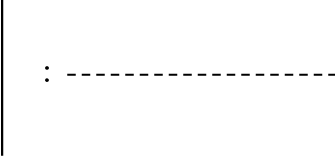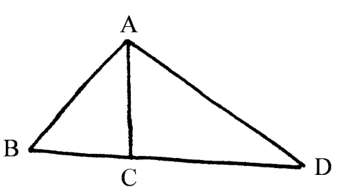| << Chapter < Page | Chapter >> Page > |
1. Algemene bespreking oor meetkunde / General discussion about geometry .
2. (1) AARDE / EARTH (geo) (2) METING / MEASUREMENT (metry)
4.
(a) ‘n punt / a point
6.
(a) konstruksielyn / construction line
(c) gebroke of kortstrepie-lyn / a broken line
7.1
(a) horisontaal / horizontal
vertikaal / vertical
diagonaal / diagonal
(b) ewewydige of parallelle / parallel
⁄ ⁄
(c) loodreg / perpendicular
regte / right
┴
8 (a) 6
AB; AD; BC; CD; AC; BD
BD: 40 mm
(b) HJ; JH; IJ; IH

(c)
(d)

(e)


(f)


1. Kom ons val weg met ’n klasbespreking. Wat, dink julle, is MEETKUNDE, en waaroor gaan dit?
2. Het jy geweet?
’n Ander woord vir “Meetkunde” is Geometrie . Dié woord is afgelei uit twee Griekse woorde. Ontsyfer die kode en vind uit wat dié twee woorde is.
1.
a) 72 ÷ 8
b) 7 x 6
c) 9 x 4
d) 9 x 6
e) 144 ÷ 12
________________
(geo)
2.
a) 12 x 8
b) 36 ÷ 4
c) 29 + 13
d) 56 − 18
e) 11 x 4
f) 12 x 3
_________________
(metrie)

3. Het jy geweet?
Meer as 5 000 jaar gelede het die Antieke Egiptenare in die Nylvallei meetkundige reëls toegepas om piramides te bou. Die Babiloniërs het ook meetkunde gebruik om tempels te bou en besproeiingstelsels te ontwerp. Die beroemde Griekse meetkundige, Euklides, het 300 jaar v.C. geleef. Volgens hom is die boublokke van meetkunde punte, lyne en vlakke.
4. KOPKRAPPER!
a) Wat is die kortste moontlike lyn?___________________________________
b) Wat kry ons as ons twee lyne saamvoeg en hulle sny mekaar? ______________________________________________________________
c) Wat kry ons as ons meer lyne by bogenoemde voeg?________________________
5. BELANGRIK om te weet
PUNT : ’n Punt het net ’n posisie en geen grootte nie. Ons dui dit met ’n klein kolletjie ( ) aan.
LYN: As ons twee punte het, kan ons ’n lyn deur hulle trek.
’n Lyn het slegs lengte en nie hoogte of breedte nie.
’n Reguit lyn het geen begin- of eindpunt nie.

LYNSEGMENT: ’n Lynsegment is deel van ’n lyn. Dit het ’n begin- en eindpunt.

HALFLYN OF STRAAL: ’n Straal het ’n beginpunt. Dit gaan onbeperk voort in dieselfde rigting en het nie ’n eindpunt nie. (Dink aan die strale van die son).

VLAK: ’n Vlak het lengte en breedte, maar nie hoogte nie.
Jy kan dit beskou as ’n “plat” ruimte, bv. ’n reghoek.

6. KOPKRAPPER!
a) Wat noem ons dié lyn? . . . . . . . . . . . . . . . . .
Dit word gebruik in konstruksies om ’n figuur te teken.
_____________________________________________________________________
b) Wat noem ons dié lyn? _____________________
Dit is gewoonlik donker en word gebruik vir die finale lyne van ’n tekening.
_____________________________________________________________________
c) Hierdie lyn word gebruik vir versteekte of onsigbare lyne. _ _ _ _ _ _ _
Wat word dit genoem? (dis nie ’n stippellyn nie)
_____________________________________________________________________
7.1 Onthou jy nog?
§ Kan jy die ontbrekende woorde invul?
a) Lyne kan in verskillende rigtings loop:

ii)

:
iii)

b) Lyne wat ewe ver van mekaar af is, noem ons __________________________
of _____________________________________________ lyne.
Ons gebruik dié simbool _________________ om “is ewewydig aan” aan te toon.
c) Twee lyne is______________________________ op mekaar wanneer die hoek tussen hulle 90 grade is.
Ons noem dié hoek ’n _______________________________________________ hoek.
Ons gebruik die simbool ___________________ om “is loodreg op” aan te toon.
7.2 Ontwerp ’n muurbehangsel deur net van horisontale en vertikale lyne gebruik te maak. Kleur dit netjies in.
7.3 Kan jy aan jou klasmaats verduidelik hoe ’n mens loodlyne teken?
7.4 Kan jy verduidelik hoe ons ewewydige lyne trek?
_____________________________________________________________________
_____________________________________________________________________
_____________________________________________________________________
_____________________________________________________________________
_____________________________________________________________________
_____________________________________________________________________
_____________________________________________________________________
_____________________________________________________________________
8. KOM ONS TOETS JOU KENNIS!

Hoeveel lynstukke is in dié skets?__________________________________________
Noem hulle: __________________________________________________________
_____________________________________________________________________
Meet elkeen se lengte: __________________________________________________
_____________________________________________________________________

Noem die vier halflyne in die skets:
_____________________________________________________________________
_____________________________________________________________________
_____________________________________________________________________
_____________________________________________________________________
c) Trek lyn EF.

d) Trek lynstuk GH 32 mm lank.

e) Trek halflyn MN.

f) Trek KL // OP.

g) Trek VW XY.

Leeruitkomste 1: Die leerder is in staat om getalle en die verwantskappe daarvan te herken, te beskryf en voor te stel, en om tydens probleemoplossing bevoeg en met selfvertroue te tel, te skat, te bereken en te kontroleer.
Assesseringstandaard 1.8: Dit is duidelik wanneer die leerder hoofberekeninge doen wat kwadrate van natuurlike getalle tot minstens 10 2 en derdemagswaardes van natuurlike getalle tot minstens 5 3 behels.
Leeruitkomste 3: Die leerder is in staat om eienskappe van en verwantskappe tussen twee-dimensionele vorms en drie-dimensionele voorwerpe in ‘n verskeidenheid oriëntasies en posisies te beskryf en voor te stel.
Assesseringstandaard 3.4: Dit is duidelik wanneer die leerder nette ontwerp en gebruik om modelle te maak van meetkundige drie-dimensionele voorwerpe wat tot en met hierdie graad bestudeer is.

Notification Switch
Would you like to follow the 'Wiskunde graad 7' conversation and receive update notifications?